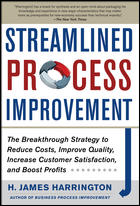I know this column will horrify many of my readers, but I assure you that is not my intention. In this expose I reveal all so that readers will not fall victim to this condition, one that often remains unobserved until it reaches everyday life, shattering dreams along the way.
The breakthrough into reality usually triggers the first symptoms and, without treatment, can result in a rapid downhill slide. Those symptoms include disbelief, frustration, anger, and in some cases, blazing rage where millionths of an inch or parts of a micron appear to have the destructive power of uncontrolled nuclear reactions.
Like many diseases, this one is innocent enough in appearance when first noticed, but once it gets under way, it’s difficult to stop. It all begins with the receipt of a calibration report. This will come as a shock to many, but some folks actually read these reports before filing them away. And if that is all that happens, all would be well. But others compare today’s report with a previous one for the same item and note differences in the reported data—the symptoms. Reactions to a difference in the data will vary with the magnitude of the difference. The bigger the difference, the bigger the reaction.
A recent case illustrates the problem. The data on a current report was different than when the gage was last checked, a few years ago, by the same lab. To make matters worse, the current report indicated that the gage may have grown in that period. The patient demanded answers as to how that could occur even though it was as yet an unproven suggestion in this case. The magnitude of the difference was well within the stated uncertainty for the measurement and the reported data was within the tolerance for the gage. But this was not enough. A second opinion was demanded.
Specialists from the lab’s ICU reviewed the data and concluded that one or more causes could lead to the conditions indicated. They could be due to the first calibration being wrong, the second one being wrong, or both being wrong. Of course, it could be that the gage metallurgy was wonky—from the Greek?—meaning unstable, in which case, both calibrations would be vindicated.
The immediate cry for more tests was muted by discussions as to who would pay for them and questions about whether they would be any more definitive at the end of the day. It was concluded that they would not be particularly enlightening.
Patient history review showed he believed his measurements were always free of error and he expected his calibration source to be similarly capable. Discussions respecting measurement uncertainty were ignored when it was suggested that there was nothing “wrong” with the data. It was the mental processing of the data that triggered the problem.
As I write this, the matter is still open, but when our technical rep follows it up measurement uncertainty will be the topic of discussion. But experience shows that too many patients with this condition consider measurement uncertainty to be a smokescreen to hide things. But it is a reality with every measurement made to a greater or lesser extent. Obviously, when gages are involved, the ratio of uncertainty to tolerance is noticeably higher.
Any auditor familiar with metrology is aware of this and instead of getting too excited by such a situation, would be more concerned if the two reports had the desired identical readings. Why? Because the odds that this would occur naturally are slim. And when it does, it usually means someone is fiddling with the numbers or doing some creative rounding up of them.
You could look at this situation from the brighter side of it all. If the gage was really growing, it might never wear out, which has to be a bonus. Unfortunately, most patients are more focused on the millionths of an inch or microns that are involved rather than what they mean in the grand scheme of things.
As any physician will advise, when symptoms are a bit dicey, the best thing to do is keep an eye on the situation and review the data on the next checkup. In the meantime, direct measurement of some components the gage has been used on could reduce anxiety levels while eliminating the need for tranquilizers.
Hill Cox is president of Frank J. Cox Sales Ltd. (Brampton, Ontario, Canada). He may be reached at [email protected].


